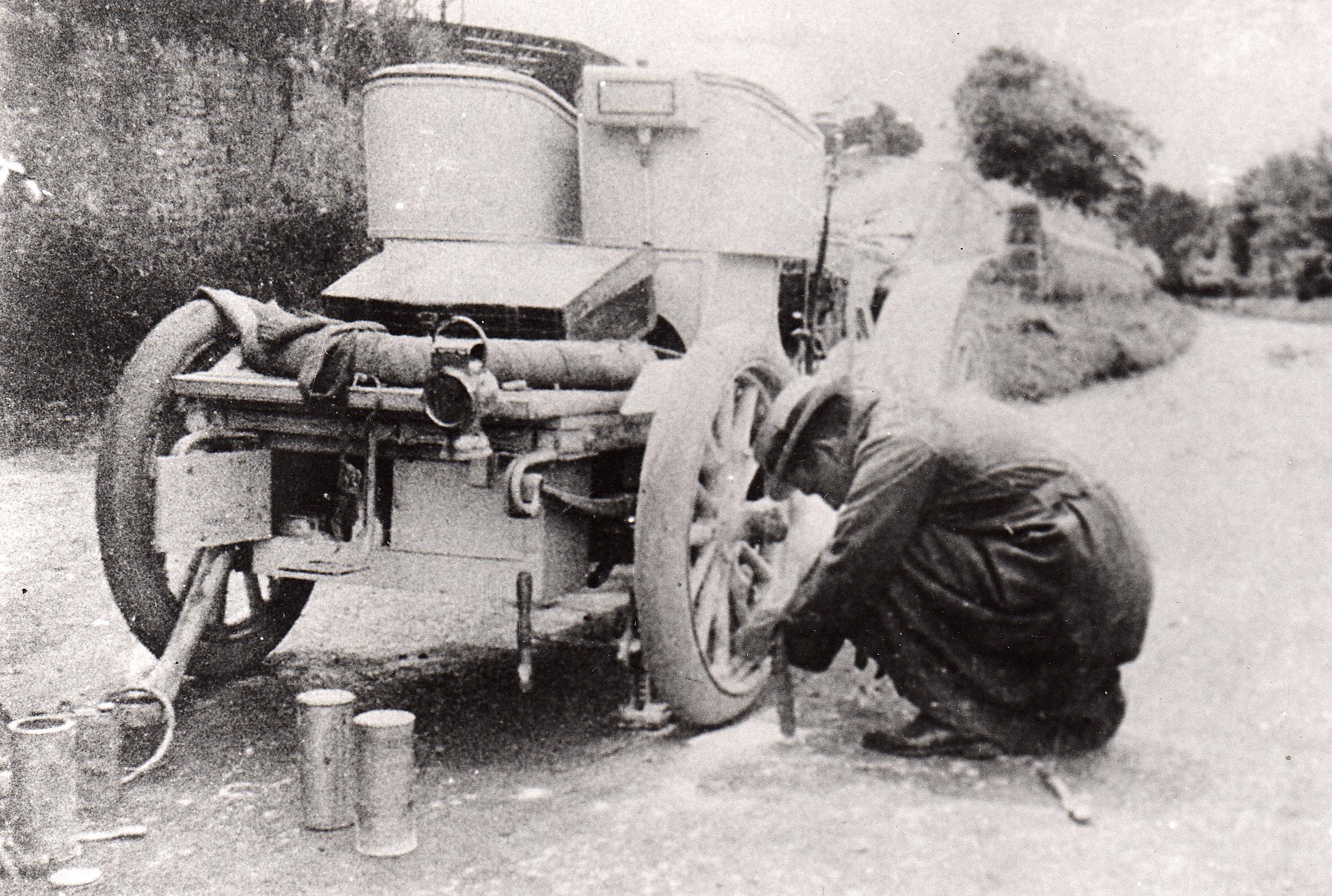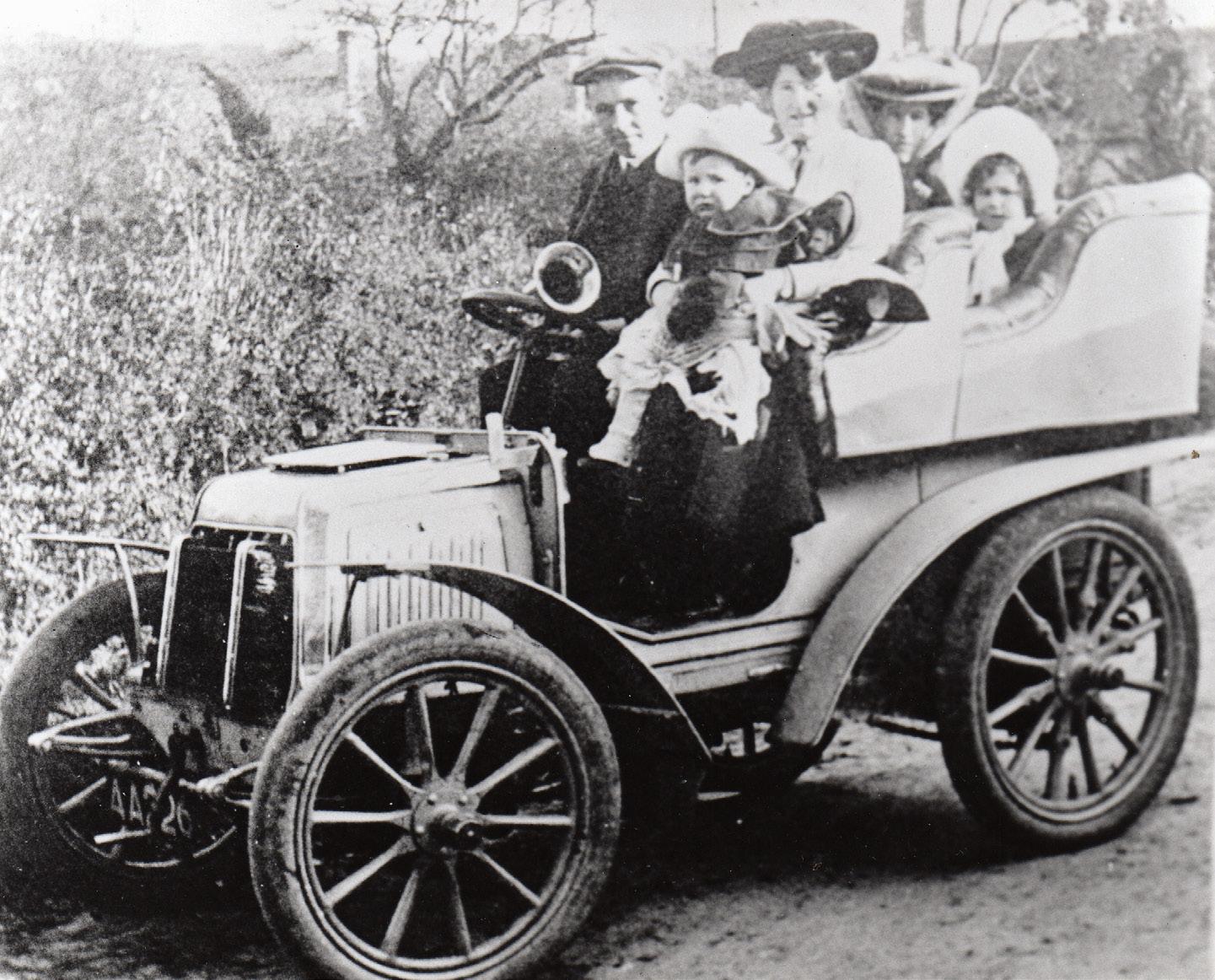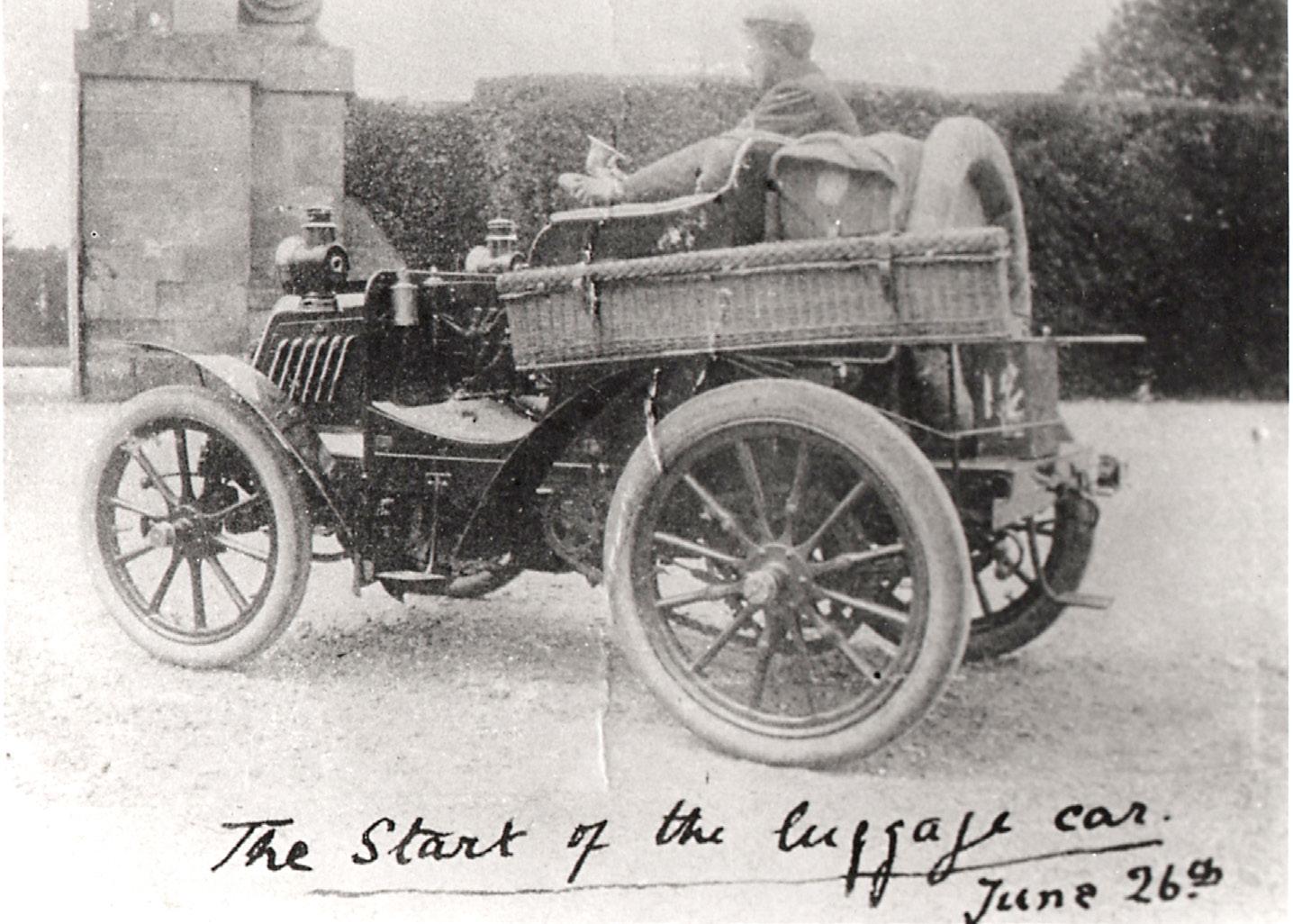
4 minute read
Looking Back | Roger Guttridge
She was Dorset’s first woman driver, and she documented her motoring adventures in a diary written almost 120 years ago. Roger Guttridge shares the story of Mary Farquharson.
Puncture repairs during the journey to Dublin
The diary – hand-written and unpublished – describes the eventful travels of Mary Farquharson, wife of village squire Henry, of Eastbury House, Tarrant Gunville. During her first year on the road in 1902-03, her 10-horsepower Panhard-Levassor took the ambitious motorist as far afield as Oxford, London, Lincoln and Dublin. But it was never plain-sailing. Punctures and breakdowns punctuated every trip and Mary’s mechanic, whom she refers to only as ‘Black’, was required to follow on his motorbike to deal with any problems. ‘I believe she was not only the first woman driver in Dorset but in the south of England and possibly the whole country,’ her son, Peter, told me in 1991, when he was 80.
A wedding in Oxford
Mary’s first diary entry on July 1, 1902, describes a trip to Oxford for a wedding the following day. ‘Marcia and I were ready to start at 10 o’clock,’ she writes. ‘We waited an hour and then found out the pump would not work, so Black was wired for. ‘We eventually started at 2 o’clock and met Black on his bicycle. We then stopped for the pump to be done.’ The travellers resumed their journey only to hit trouble again as they approached Melbury Abbas: their brakes weren’t working. Wisely, they decided not to proceed down the steep hill into the village and sent to Shaftesbury for help. Two hours later, five men arrived
“...five men and lowered the car down the hill arrived and on a rope. lowered the car Mary writes: ‘We went on to Shaftesbury and stopped one down the hill on a hour there while the brakes were rope... we having seen to. It was 7 o’clock when we been five hours doing 10 miles” left there, we having been five hours doing 10 miles.’ At Salisbury the 1901 Panhard had a puncture and the novelty of a car undergoing roadside repairs attracted a crowd of
curious onlookers. When the roofless vehicle finally left the cathedral city at 9pm, it was ‘quite dark and pouring with rain’. Mary and Marcia reached Andover at 10.45 and stopped for some supper and a change of clothes, but at 11pm were ‘turned out (closing time) having only had a few mouthfuls’. The diary goes on: ‘Andover to Newbury in pitch darkness, and we did not know the way, was not a very enjoyable ride. ‘The brakes are again not acting, and we came to some steep hills, and once the car got out of control. ‘We occasionally woke up a cottage to inquire the way. We reached Newbury at 2.30 and were stopped by a policeman, who wished to take our names, as we had only one lamp burning, the other having just given out.’ They managed to give the officer the slip by driving off when he popped into a hotel to write down their names. What was left of the night was spent at another hotel but by 6am they were off again. Two miles from Oxford the countershaft bracket broke, forcing the travellers to abandon the Panhard in a barn and complete the journey in a hansom cab. They reached the wedding venue with barely an hour to spare.

Horse not required
A week later, during a trip to Maidenhead, the brakes failed again – this time on a hill marked ‘Dangerous’. ‘The car was fast getting out of control,’ says Mary, who was with husband Henry and Black. To avert disaster, they ran the car into a bank, where it became firmly stuck. ‘We enlisted some haymakers, who lent us a horse to endeavour to extricate the car,’ writes Mary. ‘The horse proved utterly useless and did more harm than good, as it only proceeded to kick. ‘The men then managed to pull it out themselves and with great difficulty we got down the hill and pushed the car into Romsey, with both tyres badly punctured.’ Returning from a trip to Lincoln, the car collided with a horse and dogcart driven by a small boy. The Panhard’s hubcap was bent but Mary fails to tell us what happened to the boy and his horse and cart.
The Daimler luggage car leaves Eastbury House for Dublin with Black the mechanic at the wheel The Farquharson family in their 1901 Panhard-Levassor

Thrill seeker
Mary’s most ambitious journey during her first year as a motorist took her to the famous Gordon Bennett motor race near Dublin in 1903. On this occasion Black was required to leave early in the slower 1898 Daimler luggage car. They crossed the Irish Sea from Anglesey with more than 50 other cars on what must have been one of the world’s first car ferries. Mary, whose husband held the dubious honour of being the first driving to crash a racing car at Brooklands, noted of the Dublin event: ‘To see the cars thunder by was most thrilling, the speed being terrific.’










